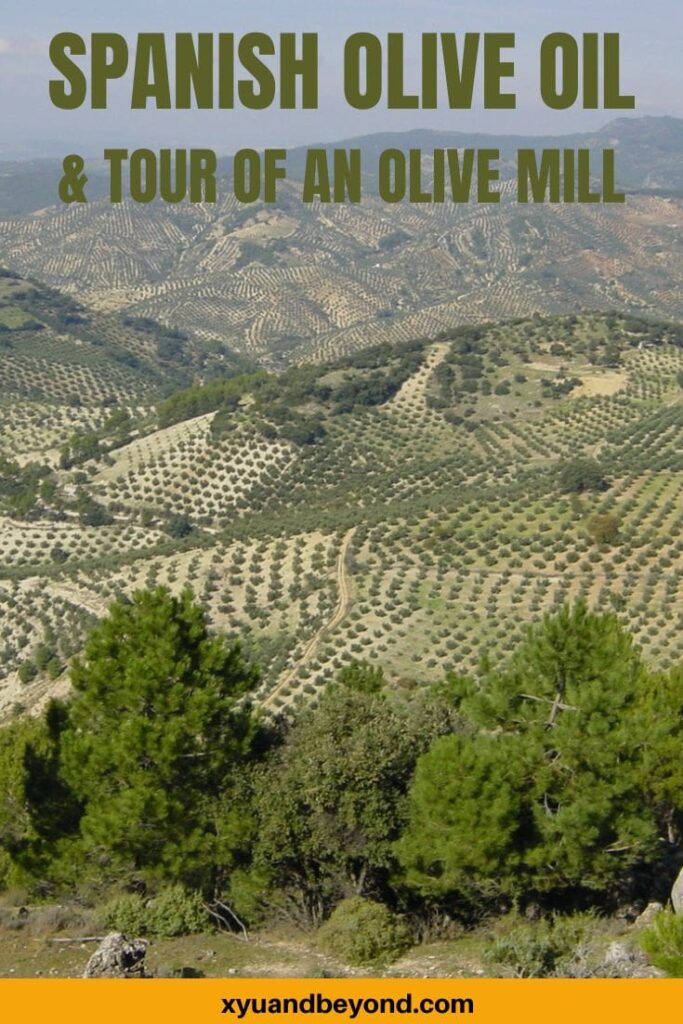The Ultimate Guide to Spanish Olive Oil
Olive oil is one of the earliest known foods in the world and Spanish olive oil is the best if you get the opportunity to go on a tour of a Spanish Olive Oil mill and taste the oil produced there you will begin to understand why Spanish food culture uses olive oil in virtually everything – even to take a tablespoon of olive oil a day for health reasons. Spanish olive oil is like nothing you have ever tasted, forget cod liver oil, olive oil from Spain is light and has an almost lemony flavour.
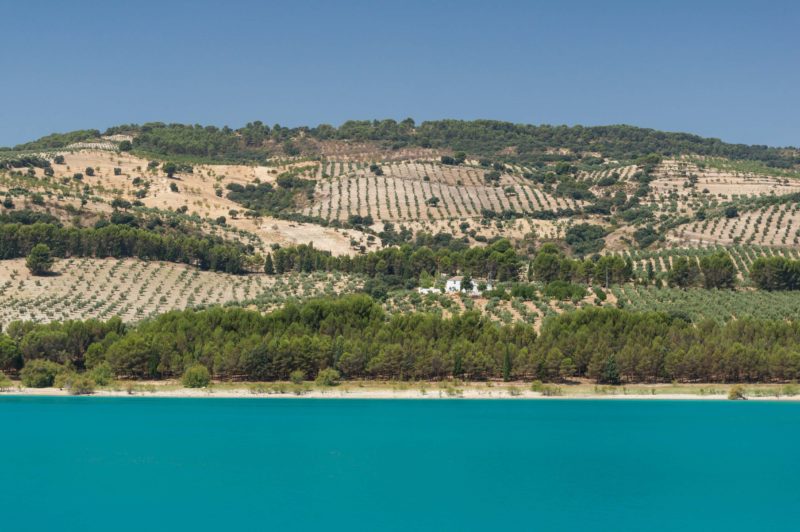
Spain is the world leader in the production, sales and export of olive oil, producing roughly half of the olive oil in Europe, If you live, eat or travel through Spain you will come to appreciate the supreme quality of Spanish Olive Oil, particularly that produced in the Andalusian region.
- The Ultimate Guide to Spanish Olive Oil
- Spanish Olive Varieties
- What are the best Spanish extra virgin olive oils, by region?
- Spanish Olive Oil the best in the world
- How Olives are harvested and processed for Spanish olive oil
- Tips for choosing the best Spanish Olive Oils
- Cooking with good Spanish Olive Oils
- Spanish Olive Oil in the Almeria Desert – the Castillo de Tabernas
Spanish Olive Varieties
It may surprise you but there is no difference between a black olive and a green olive the only difference is in the ripeness of the fruit. Green olives are unripe and black are fully ripened.
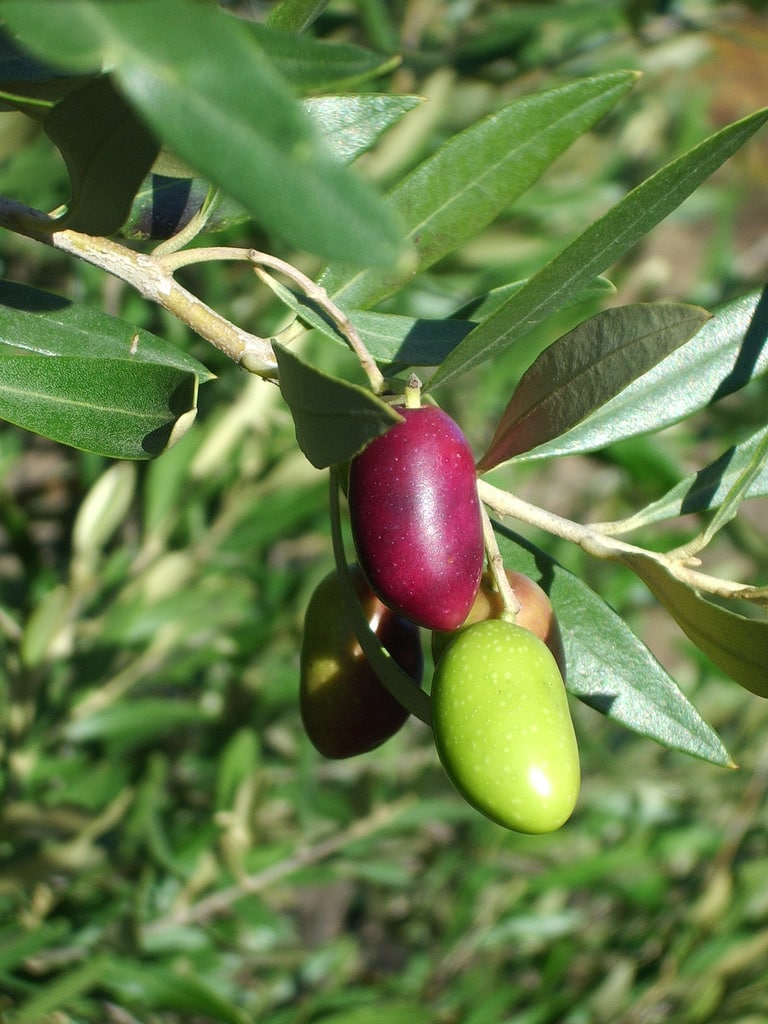
Because green olives are naturally bitter they have to be cured before you can eat them. Curing is done either by oil, brining, or dry curing. This curing process preserves and flavours the olives.
The olives that are made into olive oil are NOT cured and this is where a good extra virgin olive oil or EVOO get that slightly peppery flavour. Oils that have a very spicy and peppery flavour are from olives that are harvested when green and a sweeter oil is the result of black olives.
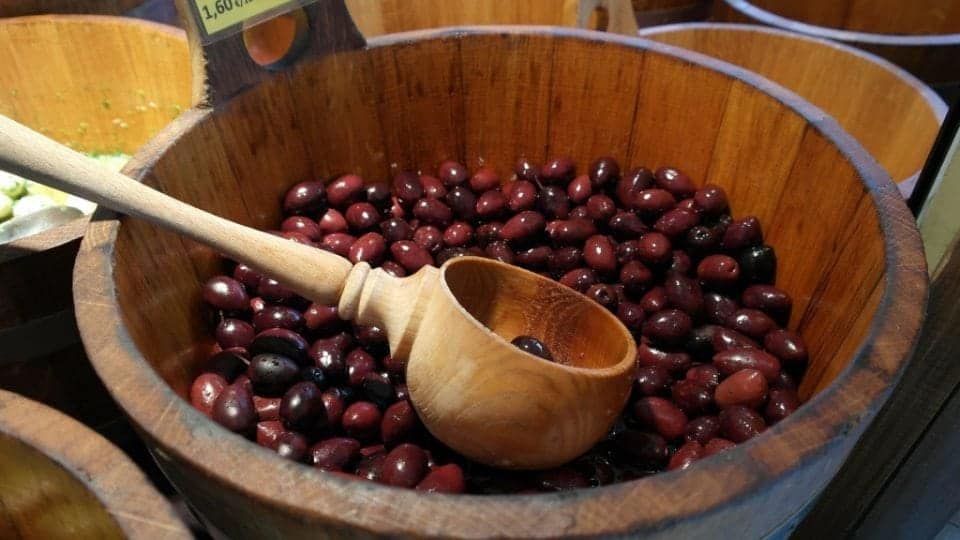
Spain has over 260 varieties of olives and each variety has its own unique flavour and aroma. In the province of Jaén, the most common olives are Picual. Over 30% of the world’s olive oils are produced from this variety of olive. The word “picual” refers to the shape of the olive, which comes to a pointed tip.
Picual olives are known for their flavour which when pressed results in a full-bodied oil with a fruity peppery taste and a little bitterness at the end. The flavour has been compared to green herbs, cut grass and tomato leaves.
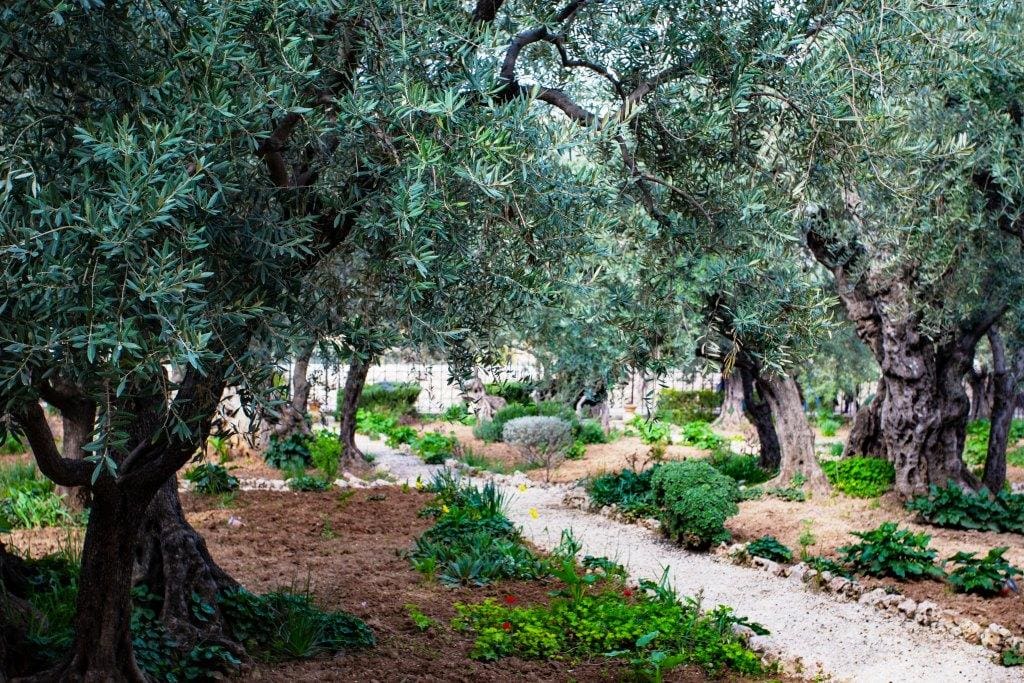
What are the best Spanish extra virgin olive oils, by region?
Andalusia
Andalusia is located in the south of Spain and is home to the Jaén province, which is the undisputed star of olive oil production in the country and hence, the world. Covered in olive trees, some of the finest oils ever come from here.
90% of the Olive Oil produced in the Andalucia region comes from the Jaén province. Over 550 square kilometres are planted with olive trees and they produce 600,000 tonnes of oil every year which is over 67 million litres of ‘liquid gold’ a year.
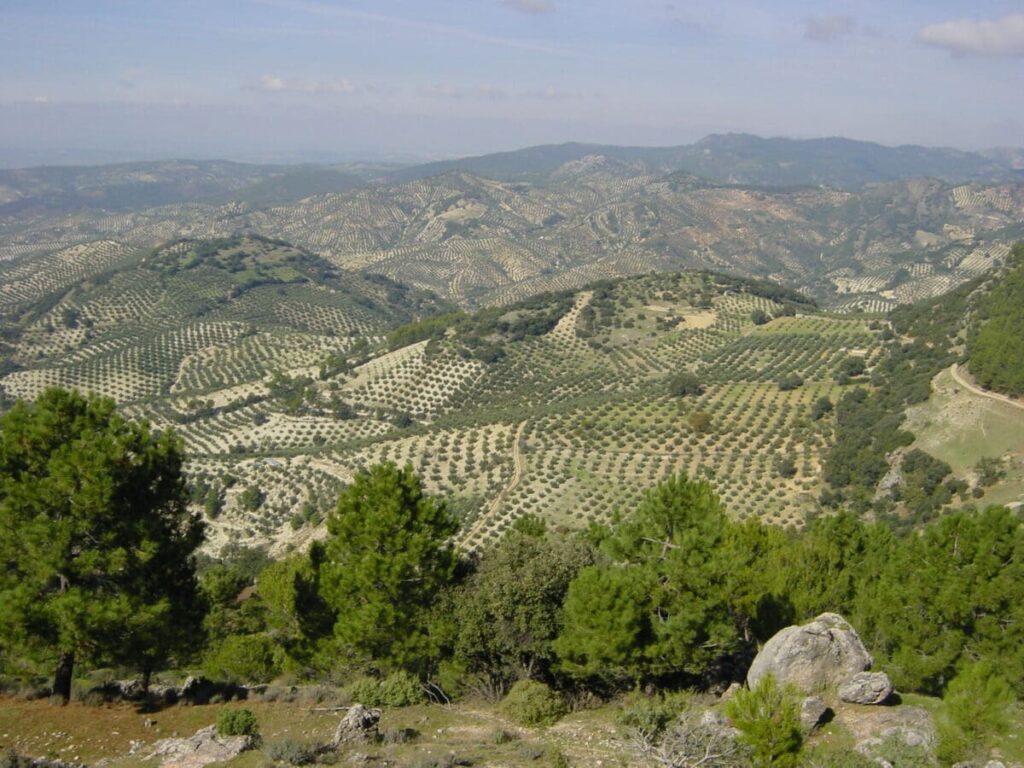
We were able to tour the Castillo de Tabernas Olive Oil Mill in the Desert of Tabernas near Mojacer in Almeria Province in Andalucia. The olive farm has more than 300,000 olive trees and 700 hectares making them one of the largest international producers of gourmet extra virgin olive oil with only 0.1 degrees of natural acidity.
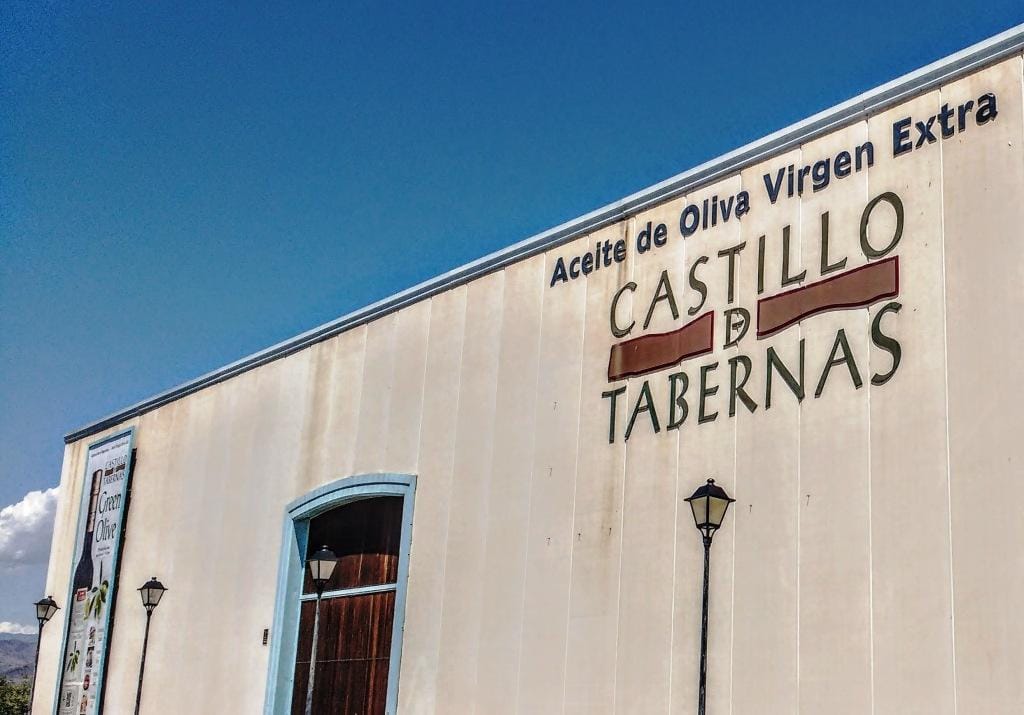
Cordoba
Cordoba, also in Andalusia, is another of the main olive oil-producing areas in Spain, and there are guided visits to places like Hornachuelos, Montoro and Adamuz, close to the city of Cordoba and the Cardeña-Montoro and Hornachuelos Nature Reserves, home to more than 100,000 hectares of olive groves.
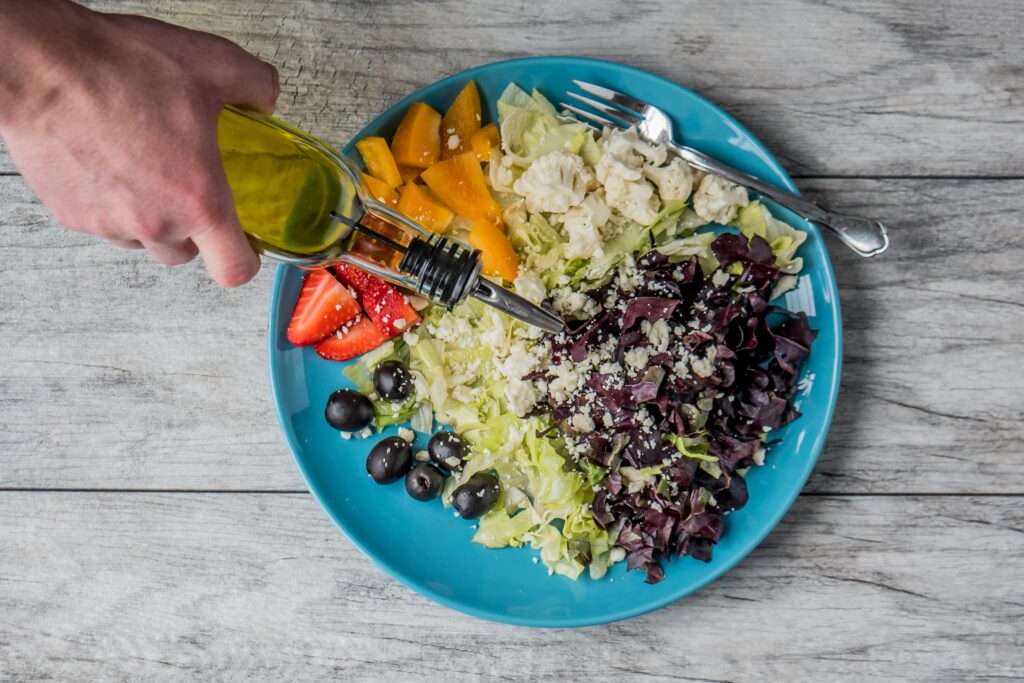
Catalonia
Olives have been a part of the Catalan landscape for millennia, and have shaped the culture of these lands. There are five protected designation of origin oils throughout Catalonia, each with its own well-defined flavour and body. Catalonia is home to Barcelona and if you visit the area be sure to take an Olive Oil tour or visit the Oilve Oil Eco-museum, in Pobla de Cèrvoles; the Castelldans Olive Oil Museum; and the Olive Oil Theme Park in Les Borges Blanques which has 54 ancient olive trees.
Spanish Olive Oil the best in the world
The best way to learn about the flavours of olive oil is by tasting. I personally don’t like to eat olives I am just not a fan, but I am a huge fan of good olive oil. I was surprised at the lightness of the Spanish Olive Oils and the flavour that came through clearly. I can see why you wouldn’t want to destroy a good cold pressed Spanish Olive Oil by cooking with it use it to drizzle on bread or as a salad dressing you will be really surprised at the flavours that come through.
How Olives are harvested and processed for Spanish olive oil
Spanish olives are harvested in November and December and the fruit must be picked and into the processing plant within 12 hours or the quality of the oil diminishes substantially. The fruit must not be picked off the ground it must be ‘combed’ manually from the trees into nets some Mills have more modern equipment but even with these new machines, there is no substitute for hand harvesting.
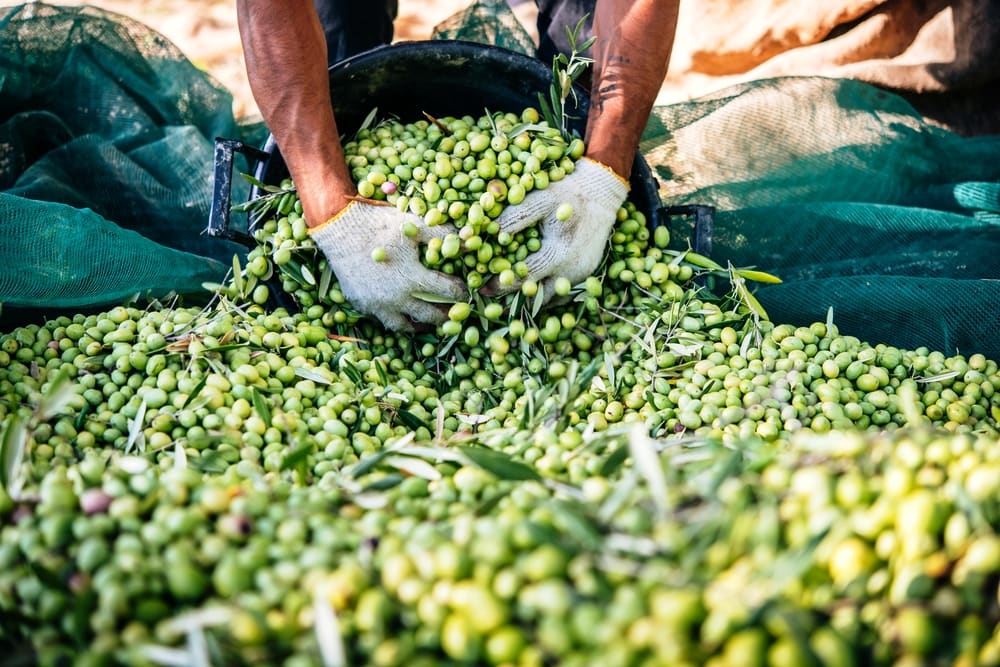
The Spanish olive oil mills use olive tree shakers to ensure the olives drop softly into nets spread under the trees.

From the harvest, the olives are taken to the processing mill by an olive escalator from the trucks.
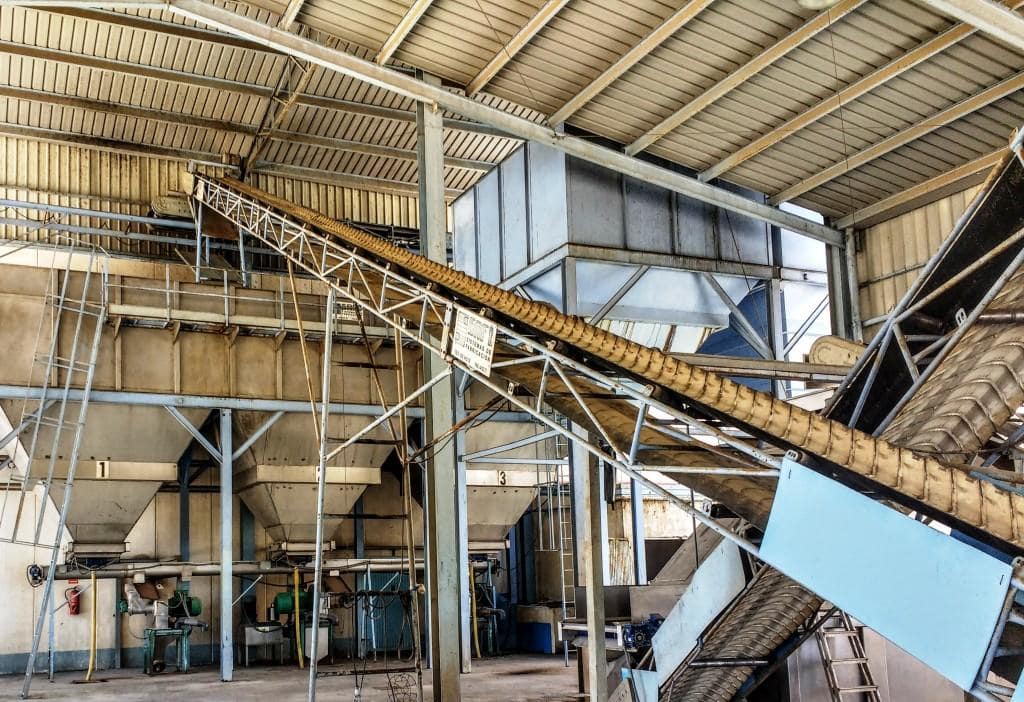
The crushed olive pits are recycled as filling for pillows that can be heated in the microwave and even fuel. Apparently, the crushed pits take a while to burn but once they do they burn hotter and longer than any other fuel source.
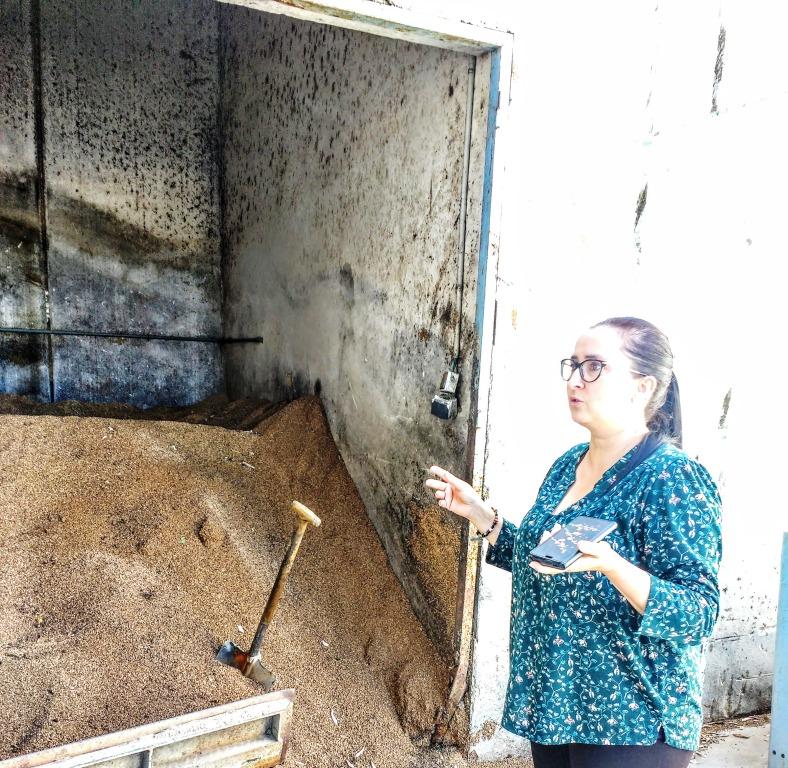
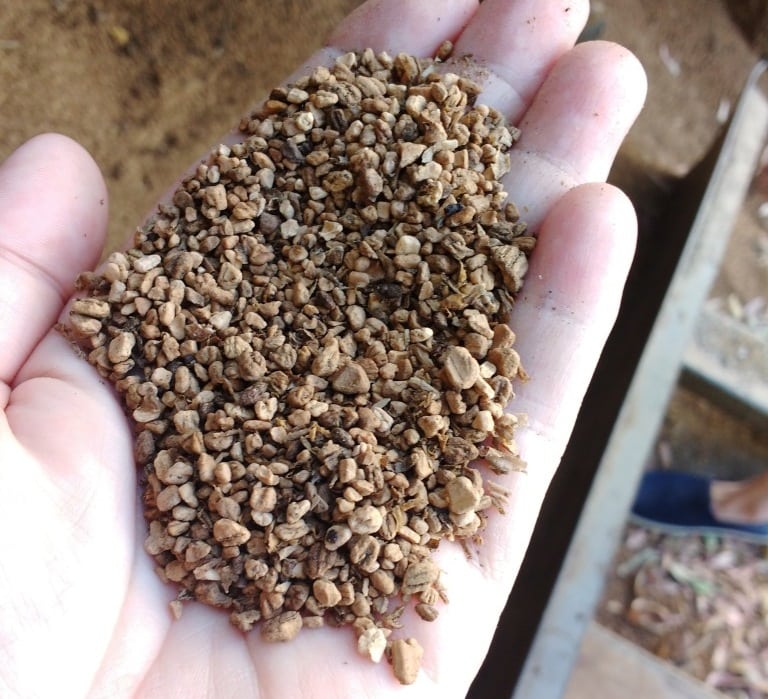
The best pressing of good Spanish olive oil is the first one. It must be cold-pressed (no heat extraction used) and generally, this pressing is unfiltered so you will get some residue (like a good wine) in the bottom of the bottle.
The flavour and quality are superb on these first pressings. The cost is immensely reasonable at the factory around $10 Canadian a bottle, at home you would pay at least double if not triple for oil this fine quality. The taste is light, fresh peppery and has a faint hint of fruity citrus flavour.
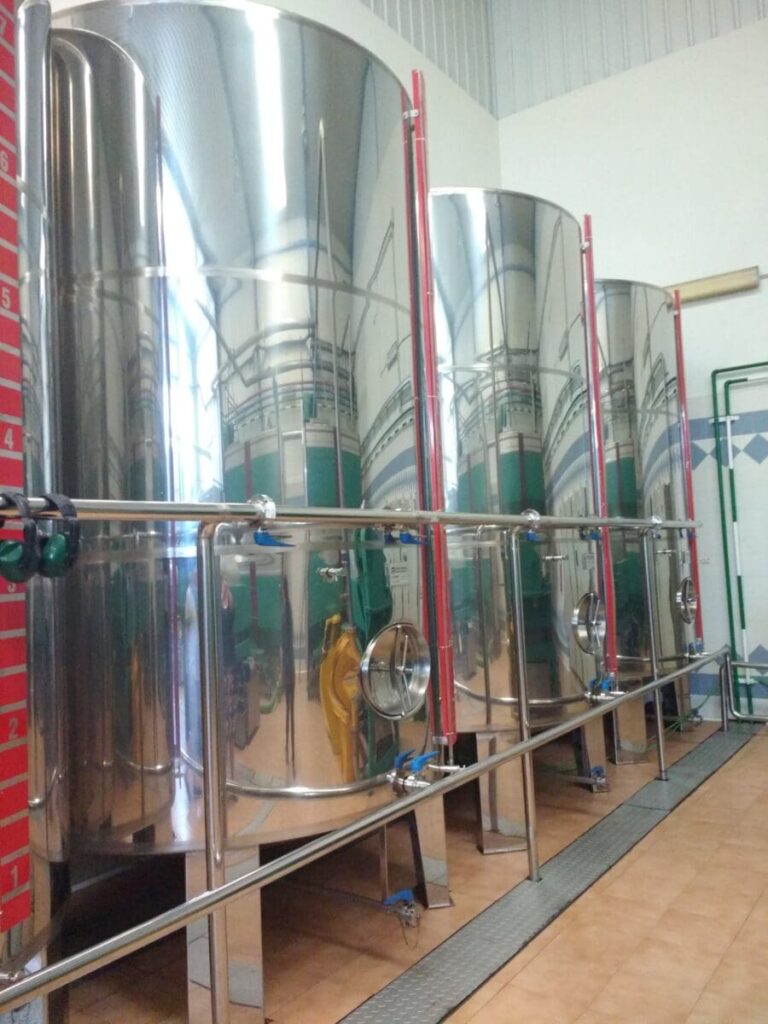
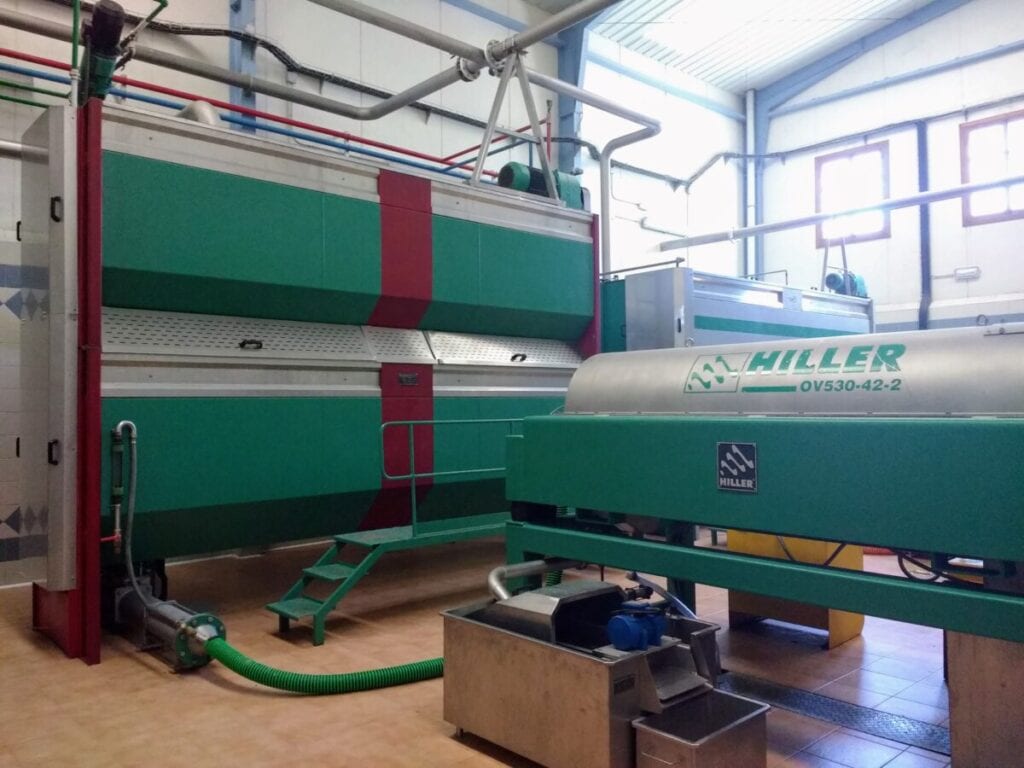
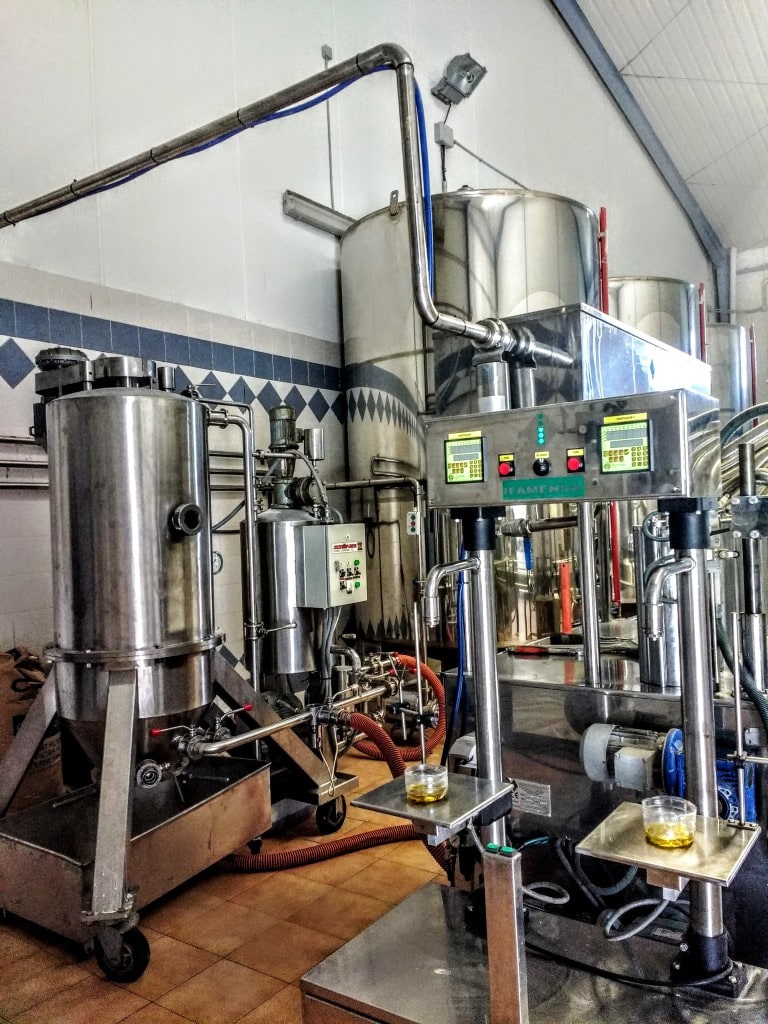
In fact Carmen our guide told us that a lot of Spanish people take a tablespoon of unfiltered olive oil every morning. Tasting this oil we found that it was light, very unlike anything we had ever tried before – nothing like that nasty cod liver stuff. The oil is bright, light and kind of citrusy, very easy to take a tablespoon of that. Pure unfiltered Spanish Olive Oils are one of the best natural medications in the world, not only that but it is great for overall health and skincare.
Beware as some of you know there has been a lot of reporting on crap olive oils in North America recently so if you want to obtain all the benefits and flavour of real olive oil – do your homework. Purchase your olive oil from a reputable store or supplier.
Tips for choosing the best Spanish Olive Oils
- Look for extra virgin olive oil – cold pressed
- Don’t buy a blend and don’t be fooled by the advertising and marketing jargon of many “name brands” that are actually blending their oils.
- Check that the oil is 100% pure with a low (under 1% acidity)
- Make sure the country of origin of the oil is noted – a product of only Spain, for example, signifies that the oil was packaged in that country
- Choose only oils grown, pressed and bottled in that specific country
- How old is it? A good bottle of extra virgin olive oil will have a “pressing” date or sell-by date. Unlike wine, olive oil does not age well. Most oils will only be “good” for one year, but to get the best flavours use within a month.
- Colour is not an indicator of good oil. The colour depends on the chlorophyll of the olives themselves when pressed. Good colour could be anything from grass green to bright yellow.
Cooking with good Spanish Olive Oils
It is a myth that you cannot cook with good olive oil. The difficulty with olive oil is that its smoke point is quite low so it is not suitable for deep frying – although it can be done.
Here is a great quote from Dr Joanna’s Blog
Extra virgin olive oil has an unqualified body of research supporting its role as a protective, beneficial food in a healthy diet. It is extremely versatile and can be used cold in dressings and for drizzling, as well as in almost all cooking applications. In this regard it is not only safe but also beneficial to our health, not to mention delivering exceptional flavour! So do as the Mediterranean countries have traditionally done for hundreds of years and enjoy cooking with your extra virgin olive oil.
Spanish Olive Oil in the Almeria Desert – the Castillo de Tabernas
The Castillo land and facility have been used as movie locations: Exodus: Gods and Kings and Spanish TV shows. The Tabernas desert, in fact, is a well-known filming location for the spaghetti Westerns of old.
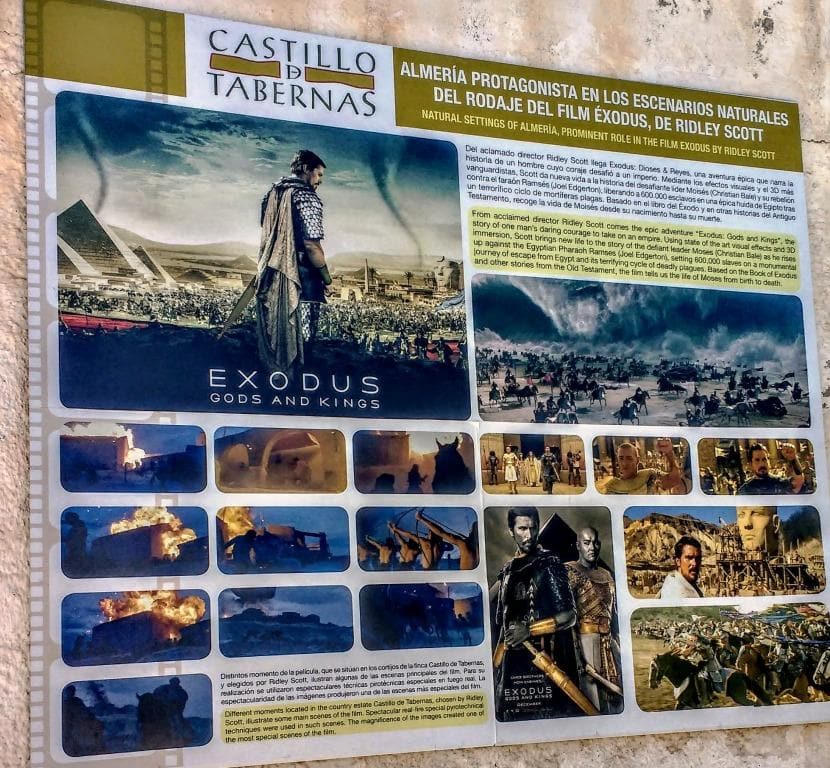
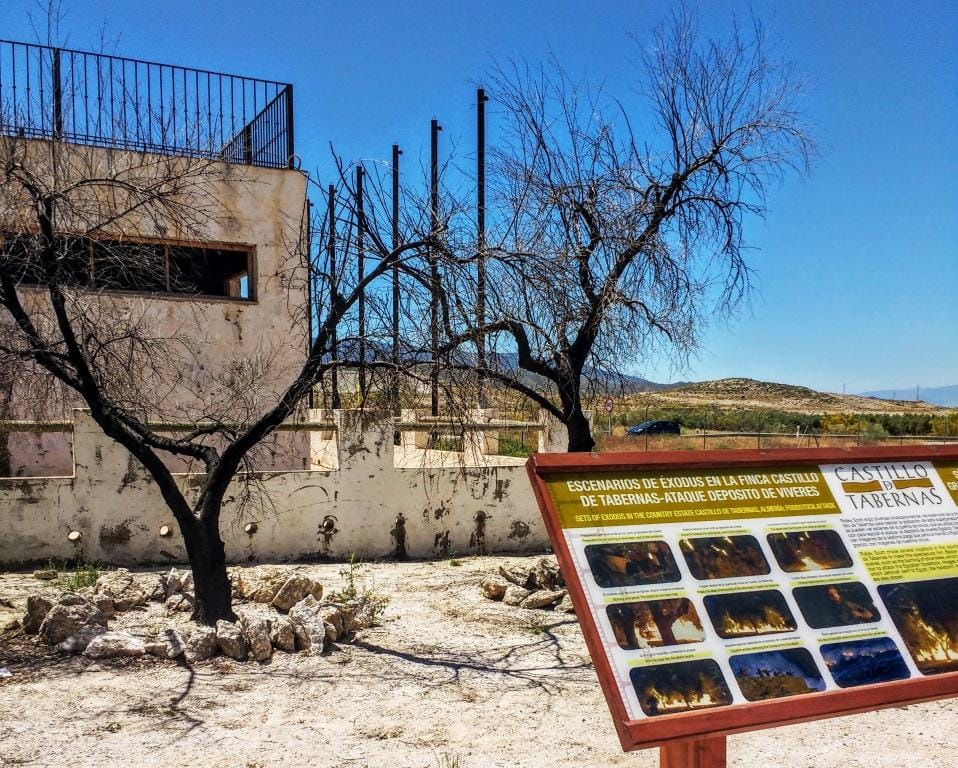
However, these days the desert is used for filming everything from TV shows like Game of Thrones to Spanish soap operas and it is still a stand-in for a good cowboy film. Other famous movies filmed here include Cleopatra, Never Say Never (James Bond), Lawrence of Arabia, Indiana Jones, Conan the Barbarian and How I Won the War with John Lennon.

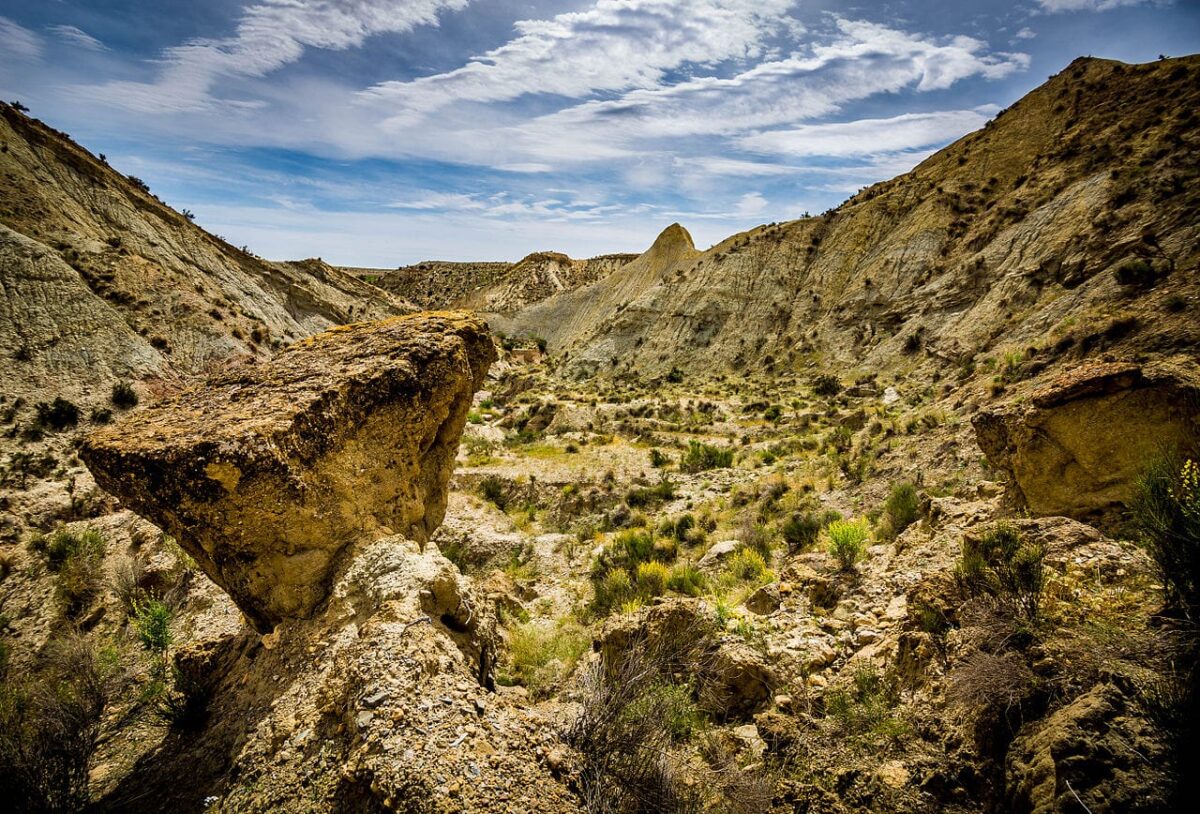

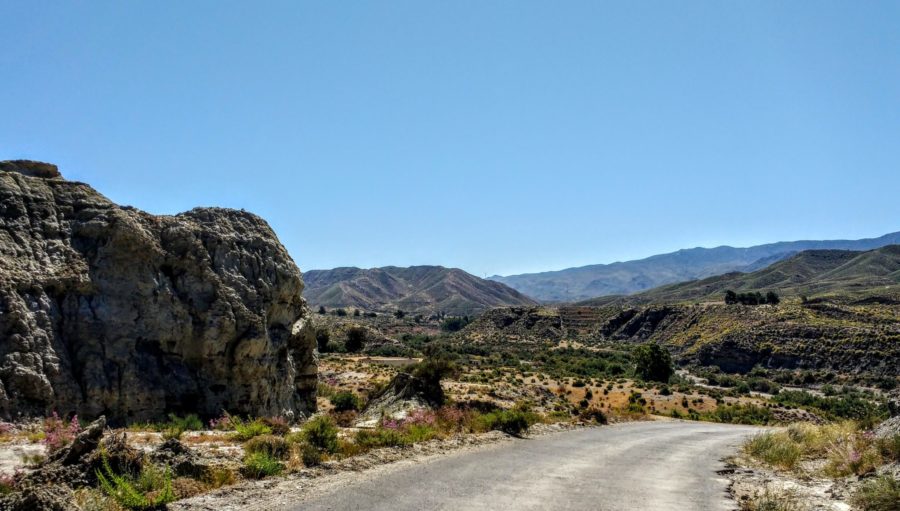
At the end of our tour, we had a taste of the oil from the 3 types of olives they grow, as well a green filtered and unfiltered oil. The green unfiltered oil was our favourite and a bargain at $10 Canadian a bottle, perfect for pouring over our Tostados, drizzled into our gazpacho – we are now confirmed Spanish olive oil fans.
And if you want a tour send Carmen an email, she speaks English incredibly well (far better than our Spanish) and she will get back to you right away to arrange a tour, [email protected]
Have you tried Spanish Olive?
You might also like to read about:
7 Less Touristy Things to do in Malaga, Spain: by a Local
20+ Pros and Cons of Living in Spain
13 Magical Things to Do in Seville
Visiting Salobreña Spain on the Costa Tropical
What is Semana Santa? Celebrating Holy Week in Spain
Celebrating Christmas in Spain: 22 traditional Spanish customs
Pin it to save it
